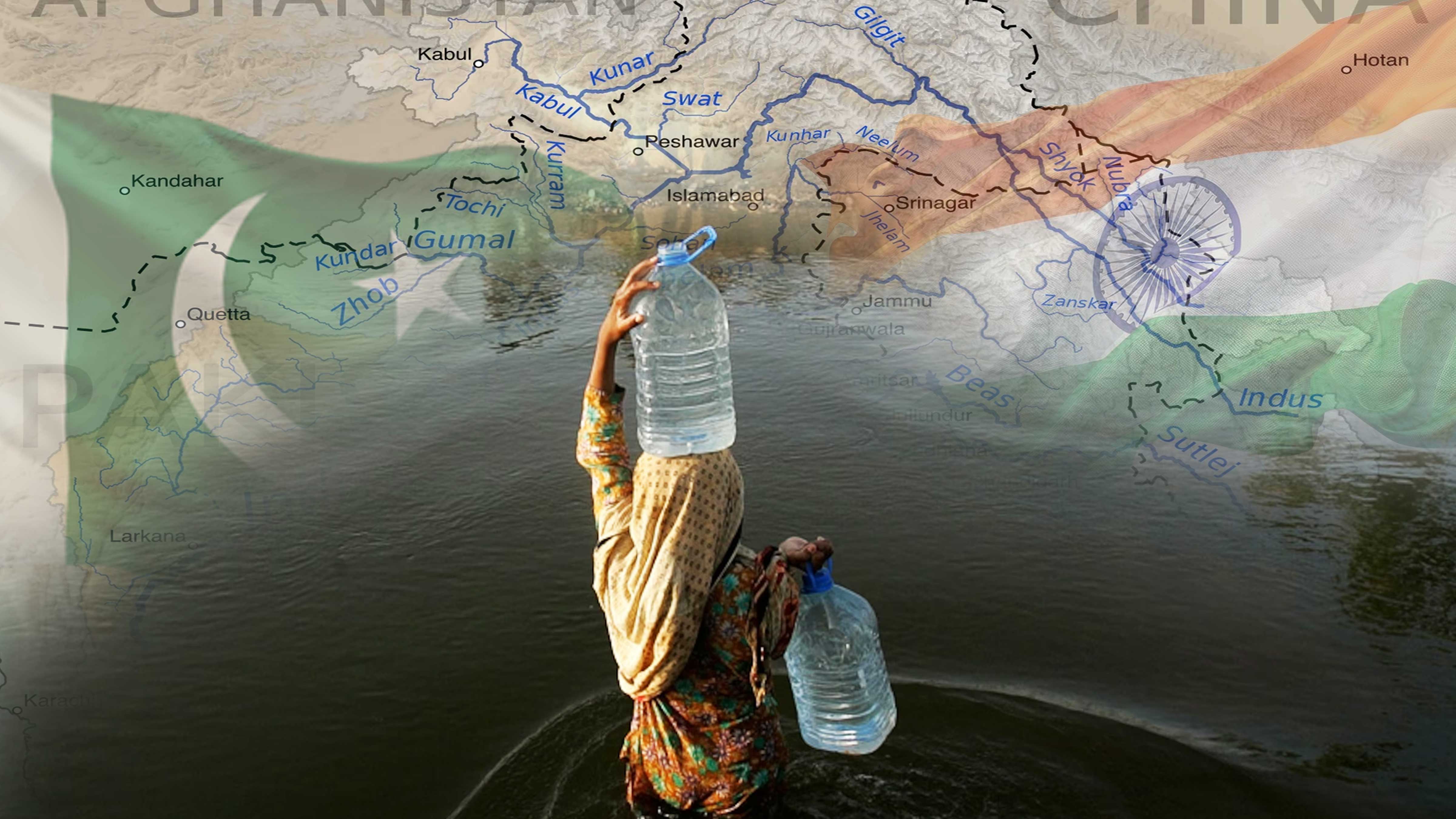
Afeera Firdous

December 13, 2025
By | Afeera Firdous

After accusing Pakistan of sponsoring the Pahalgam terror attack and putting the Indus Waters Treaty in abeyance, the fragile framework of South Asian peace has once again been shaken. India’s suspension of IWT, once considered a rare example of sustained cooperation between adversaries, has become a geopolitical flashpoint facing an uncertain future. In his recent remarks, World Bank President Ajay Banga stressed that the treaty's framework does not allow India to suspend the agreement without Pakistan’s consent. However, with evolving regional dynamics and India’s posturing towards a mechanism that is often called a stabilizing force despite wars and crises, it has challenged the whole paradigm.
Three interconnected strategic risks accentuate IWT’s current suspension. First, the threat of conflict escalation dominates, with water insecurity entangled with security dilemmas and nationalist narratives. Second, abrupt climate change is increasing the environmental insecurity in the region, such as the melting of glaciers, changing monsoon patterns, and reduced river flows. All these factors have aggravated pressures on the Indus basin, making regional cooperation more urgent than ever. Third, the diplomatic fallout of the treaty’s suspension could undermine multilateralism and set a bad precedent for transboundary water governance across Asia. Therefore, it is long overdue to analyze the historical resilience of the treaty, the pressures compelling India to seek renegotiation, and the reluctance on Pakistan’s part to revisit it, and to ensure the delicate framework survives the geopolitical imperatives of a larger neighbour.
The World Bank brokered the Indus Waters Treaty (IWT), signed in 1960 between India and Pakistan, which is acknowledged as a landmark water-sharing agreement that endured despite wars and crises for decades. According to the treaty framework, three eastern rivers, Ravi, Sutlej, and Beas, were allocated to India, and western rivers, Indus, Jhelum, and Chenab, to Pakistan, with international support enabling Pakistan’s infrastructure development, including dams and canals. Remarkably, the treaty remained effective, with the Permanent Indus Commission ensuring facilitation of data-sharing, inspections, consultations, and dispute resolution.
After the Uri attack in 2016, India’s acceleration of its hydropower development projects on the western rivers, allocated to Pakistan, has altered the whole situation. With India’s actions and Pakistan’s protest over alleged violation of the IWT’s design parameters and spirit, the dispute resolution structure of the treaty has become strained. In the meantime, the Bharatiya Janata Party (BJP) leadership has started to lambast the treaty in domestic settings, calling it a ‘historical error’ to accommodate Pakistan’s interests. The legal battle between India and Pakistan over the Kishanganga and Ratle projects has led the two to pursue two parallel mechanisms under the World Bank’s dispute resolution mechanisms, which include a Neutral Expert review and a Court of Arbitration (CoA). Both countries have come forward with different set of arguments; India's defence emphasized technical justifications, whereas Pakistan’s response was based on the cumulative impacts that threaten its downstream rights as a lower riparian state. The World Bank tried to resolve the issues through bilateral talks, which weren’t fruitful. In 2022, it allowed both proceedings, COA and a Neutral Expert Review, to move forward concurrently, stressing the treaty's institutional limitations amid complex geopolitics and environmental stress.
India’s unilateral suspension of the treaty, following the Pahalgam attack, further complicated legal norms and underscored the IWT’s fundamental principles of continuity and good faith. Additionally, international law discourages the unilateral termination of environmental and water-sharing treaties due to their significant impact on human rights and ecological stability. Threatening the IWT framework raised urgent questions about why the treaty remains relevant, yet it needs modernization to address climate impacts and regional instability.
The Indus Waters Treaty (IWT), which has remained resilient to geopolitical upheavals for decades, is now on the verge of collapse due to multiple stressors over the years. One of the major disruptors is climate change, which has reshaped and degraded the hydrology of the Indus basin through glacial retreat, erratic rainfall, and prolonged droughts. The framework of the IWT never anticipated these factors devastatingly impacting the region’s ecology. India asserts that the static design of the IWT has made it increasingly obsolete, as it lacks a clause for climate adaptation or joint basin management. Another significant stressor is India’s upstream projects on western rivers. Pakistan’s concerns regarding these projects extend beyond technical and treaty-related issues; they also encompass geopolitical considerations, as all three dams—Kishanganga, Ratle, and Pakal Dul—are situated in Indian-administered Kashmir, a disputed territory. This situation alarms Pakistan regarding India’s strategy to consolidate control in the contested region. For instance, the Kishanganga dam has remained a focal point of dispute regarding the treaty. Pakistan contends that the construction and operationalization of this dam could severely affect the downstream water flow into Azad Jammu and Kashmir, impacting the Neelum-Jhelum project.
Following Modi’s coming into power in 2014, the domestic politics in India have also changed. The BJP government has not only questioned the treaty’s fairness, but also raised slogans such as ‘blood and water can not flow together’ and ‘not even a drop of water goes to Pakistan’, especially following the Uri attack. The 2025 Pahalgam incident led to India’s unilateral suspension of IWT participation, although not a formal withdrawal, which weakens long-standing norms of cooperation. For Pakistan, renegotiating the treaty is too risky due to its lower riparian status and limited leverage. Yet, the status quo has become gradually unsustainable. Hydro experts suggest that, instead of full renegotiation of the treaty, modernizing the treaty with carefully crafted amendments is possible. Moreover, joint glacial monitoring, data sharing, and faster dispute resolution are potential pathways, though significant political and legal hurdles remain.
With the convergence of many factors such as climate change, interstate hostility, and resource scarcity, India’s decision to abstain from the treaty has increased strategic risks in the region. Water insecurity, which was already predicted to be a flashpoint between India and Pakistan, is now threatening to destabilise the crisis stability between the two nuclear-armed neighbors. David Michal, a senior fellow for water security with the Global Food and Water Security Program at a Washington-based think tank, also asserts that India’s use of the water weapon to cut Pakistan’s Indus lifeline could prove to be a double-edged sword. For Islamabad, the perception of India weaponizing water by directing upstream flows, consequently controlling the dispute region, combined with Pakistan’s concerns of India’s regional hegemonic designs and coercion, especially during a crisis, undermines the norms of water neutrality and intensifies the risk of military miscalculation.
The humanitarian, environmental, economic, and civilizational stakes in the region are equally momentous. Over 220 million people in Pakistan depend on the Indus River ecology, which, if disrupted, can worsen the existing vulnerabilities. The Indus has played a vital role not only in driving economic output but also in shaping the social fabric and identity of three provinces—Punjab, Sindh, and Khyber Pakhtunkhwa (KP)—as well as Gilgit-Baltistan (GB), all of which remain closely tied to it. After all, the river sustained the ancient Indus civilization for millennia, with its resilient ecosystem.
Challenges like irregular irrigation, prolonged droughts, and unpredictable flooding loom over food security and rural livelihoods, especially in Sindh and the southern Punjab region. In diplomatic terms, the IWT has been indicated as a resilient cooperation mechanism despite intense hostility in South Asia. The collapse of the treaty will further take the region away from multilateral dispute resolution and treaty-based governance of issues, at a time when the two countries are undoing a few surviving CBMs in place. India’s move sets a troubling precedent for other transboundary basins, demonstrating that power asymmetries can set aside the cooperative norms. In spirit, the potential collapse of the IWT endangers not only bilateral relations but also broader regional stability, with substantial consequences for human security, ecological resilience, and the veracity of international legal frameworks.
The increasing tensions between India and Pakistan on IWT highlight the imperatives for adaptive reforms to address evolving environmental, legal, and geopolitical challenges. While full renegotiation is considered too risky for the lower riparian state, targeted amendments on confidence-building and institutional enhancements can strengthen the treaty’s resilience. Reforming dispute resolution within the treaty framework is crucial, with firm arbitration timelines, clearer procedures, and increased third-party oversight. Empowering the Permanent Indus Commission to intervene early in technical disputes would also help prevent deadlocks, such as the recent overlap between arbitration and Neutral Expert mechanisms. A dedicated annex on climate adaptation and resilience should be included in the treaty agenda to enable joint glacial monitoring and seasonal forecasting. Within the treaty framework, enhancing transparency and trust through joint research centers and real-time flood and drought early-warning systems can be achieved only by depoliticizing scientific collaboration. Finally, the role of the World Bank, as a neutral guarantor, remained underutilized. The World Bank should bring some neutral states to initiate and redesign multilateral dialogue in the region. Ultimately, these solutions can only be adopted and implemented if both countries uphold international legal norms and demonstrate a willingness to engage in dialogue. More importantly, the Treaty needs to be prevented from becoming a tool of coercion or from being undone to a point where its eroded essence becomes a matter of fait accompli. If not, then the region will open the floodgates to unimaginable horrors.
Disclaimer: The views expressed herein are the author's own and do not necessarily represent the policies or opinions of The Khorasan Diary.